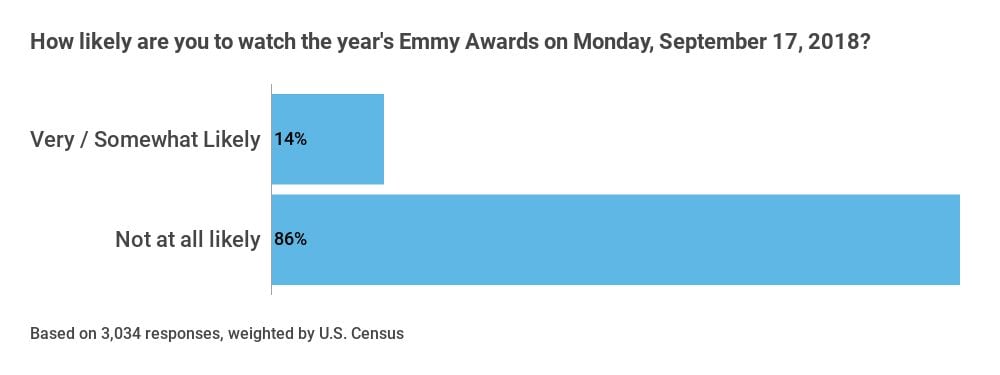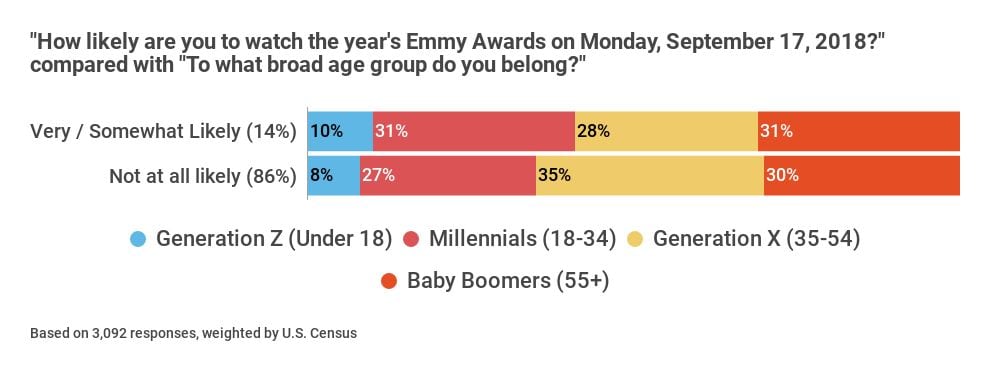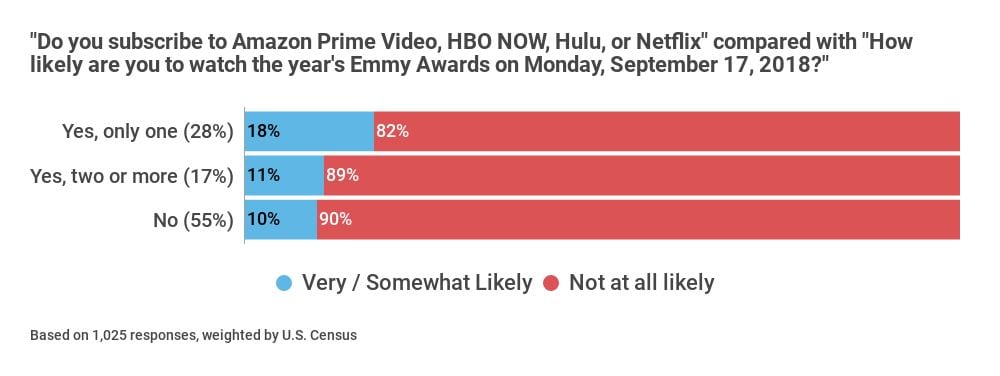No matter the platform or provider, television has captured most American’s attention. Whether it’s due to the stay at home economy, ubiquity of streaming services or people’s need for fantasy and escapism in a time of uncertainty, TV fandom is in its golden age. However, we can’t say the same for the institutions that award television.
 CivicScience asked 3,034 Americans (ages 13+) about their intent to watch the Emmy Awards next Monday. 14% indicated they are very or somewhat likely to watch the Emmys this year. Given the recent backslide in viewership numbers over the past several years, this forecast is more optimistic than usual. Maybe it’s new hosts or the breadth of nominees (streaming service nominees surpassed traditional TV this year), but more viewers might tune in next week.
CivicScience asked 3,034 Americans (ages 13+) about their intent to watch the Emmy Awards next Monday. 14% indicated they are very or somewhat likely to watch the Emmys this year. Given the recent backslide in viewership numbers over the past several years, this forecast is more optimistic than usual. Maybe it’s new hosts or the breadth of nominees (streaming service nominees surpassed traditional TV this year), but more viewers might tune in next week.
Profile of Likely Emmy Viewers
Those somewhat or very likely to watch the Emmys next week are highly engaged with media across several platforms. They’re more likely to stream music, go to the movies once a month, and choose shows to watch based on social media influence. Additionally, this group is more likely to spend time on Twitter–a central hub for discussions during live televised awards shows.
Viewership skews across several generations, with Millennials and Baby Boomers expressing equal interest in watching the ceremony.

Diving into streaming service behaviors, there’s a clear pattern of Emmy viewership. People who subscribe to a single streaming service (likely Netflix) are much more likely to watch the Emmys than those who subscribe to two or more streaming services.

While many of the Emmy nominees are on streaming platforms, fans of the ceremony aren’t. It’s an interesting disconnect between the shows the Emmy Awards chooses to honor and the makeup of its viewership.
There’s also a clear political delineation when it comes to the Emmy viewer. Over half of the audience that intends to watch (59%) identify as Democrat.
The audience is more liberal leaning. Like most media nowadays, awards ceremonies have become more political, with award winners often taking time out during speeches to address the current climate. In comparison, the 2014 Oscar viewership had a more even spread across the political spectrum; of its likely viewing audience, 43% leaned liberal, 19% conservative, and 38% identified as Independent or unaffiliated.
Awards shows have always had a liberal slant, but that divide is even more pronounced now than it was four years ago. People across all demographics might be watching the content the Emmys awards nominated, 20% of all Americans polled watch “Game of Thrones,” but that doesn’t mean they’ll tune in to see their favorite castmates accept awards.








